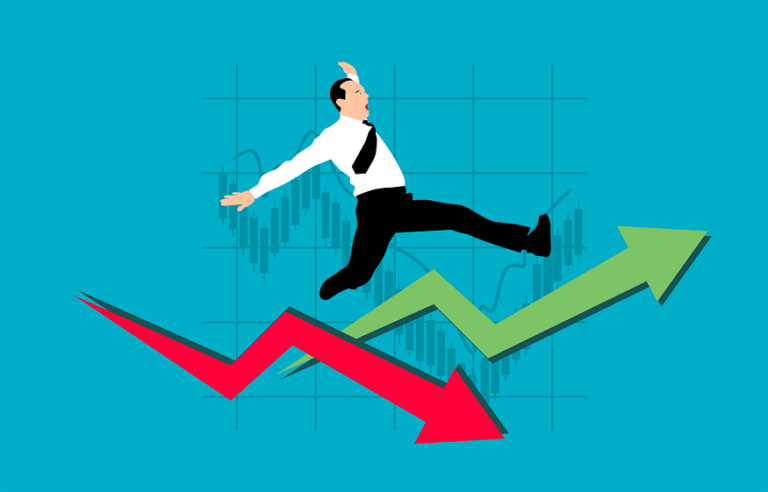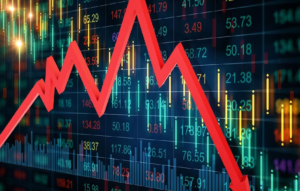So, due to the recent spike in inflation in 2022 and the slight decline in markets (which implies falling valuation ratios), return expectations have risen significantly!
In this article, you will discover the updated levels of expected returns (February 2023) but also, and perhaps even above all, you will better understand the link between inflation, interest rates and expected returns on equities.
The reward for the risk taken is therefore substantial.
No one can ! We will simply rely on historical returns but also on the principles of finance (in particular: each risk must be remunerated and the value of a share is the discounting of the future results of the company concerned) to have an order of magnitude the return that can reasonably be expected from your equity investments. In proportion to the risk taken: if you invest in shares, you expect a return higher than the return on your cash deposited in your bank account and higher than the return on bonds.
What return on equities are we talking about?
When we talk about the return on stocks, we are talking about the gross return of an investment in the stock market as a whole (gross = without taking into account fees, taxes and duties).
For example, for an investment in European equities, one could consider that the return of the equity market is represented by the performance of the EuroStoxx 600 index .
Performance of the Euro Stoxx 600 stock market index between 2005 and 2021
For a global investment, one could consider that the return would be represented by the performance of the MSCI World index and a “ world ETF” despite the limits of the latter .
So be careful, talking about the market return is like talking about the return of an investor who invests passively and in a diversified manner in the stock market. This is what you get by investing in trackers (ETF funds). We can rely on financial theory and history to estimate a range of expected return. On the other hand, it is impossible to estimate the return expected from an active investor.
Except that it will most likely be lower than the return of the passive investor: on average, active investors underperform passive investors by 1.3% to 4.6% per year and invest undiversified manner increases your chances of underperforming the stock market as a whole .
In other words, if you choose to manage your investment portfolio other than in a passive and diversified manner, your expected return will be lower than the returns set out below.
Expected return and realized return
The expected return is the one you will estimate BEFORE investing, based mainly on the duration and level of risk of your investment.
The return achieved is the one that you will actually receive and that you will only be able to see AT THE END of the investment.
What has been the historical return of an equity investment?
The return achieved depends on the period studied and the market in which the investor has been active. historical return on an investment in stocks and bonds in the United States between 1925 and historical annual return of an equity investment in different countries around the world Furthermore, it is also useful to look at the dispersion of these historical returns.
But if we focus on the annual return achieved by blocks of 10 years of investment (the red line), we see that this return has almost always been positive. This is the reason why we consider that an investment in equities must be made with a medium to long term perspective. Otherwise, it is not an investment but rather speculation.
Basically, why is it normal to expect a return on an investment?
Because by investing, you are depriving yourself of your cash and the possibility of doing something else with it. The expected return on an investment therefore has a “time value” . This will be all the greater as the duration of your investment is long .
So how do you estimate the expected return on stocks?
In the Euro zone, it is the rate of return obtained on a risk-free investment, namely a 10-year German government bond. The risk premium is an estimate made by financial analysts. This estimate can vary greatly from one analyst to another. But it is estimated, based on historical observations, that the risk premium of an equity investment is between 4% and 5.5% per year. In other words, a passive and diversified investment in equities should always bring an annual return of 4% to 5.5% higher in the long term than an investment in long-term risk-free bonds (government bonds German).
What is the return expected by top managers?
Blackrock is an American company, world leader in ETF funds. It is the largest financial asset manager in the world with over $8 trillion in assets under management.
For a portfolio composed mainly of equities from developed countries, we arrive at an expected return of around 8.5% per year (explanation: Blackrock being an American company, they express the expected returns in US dollars. Expressed in euros , the expected return on European equities is 8.5%, which explains my average of 8.5%).
This is surprising because these levels of expected returns are higher or even significantly higher than the returns achieved in the past but also, as we have seen, much higher than the levels of return expected by finance professionals.













+ There are no comments
Add yours